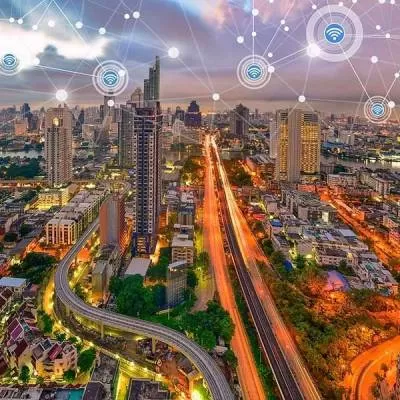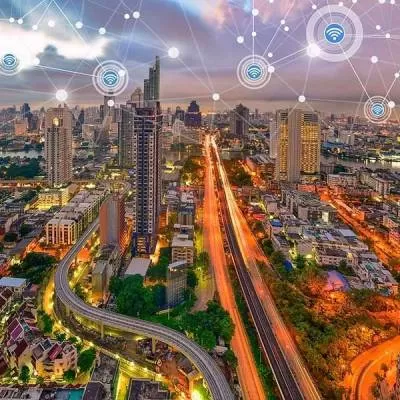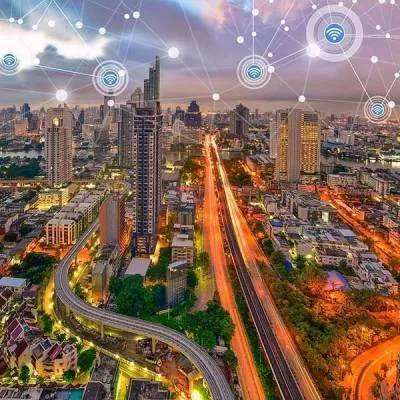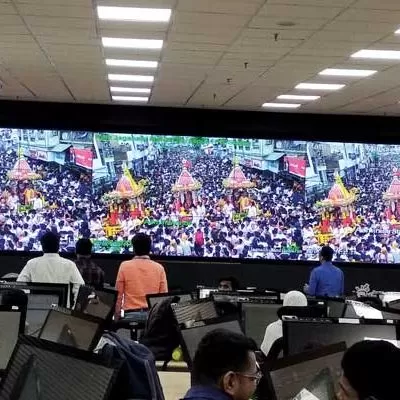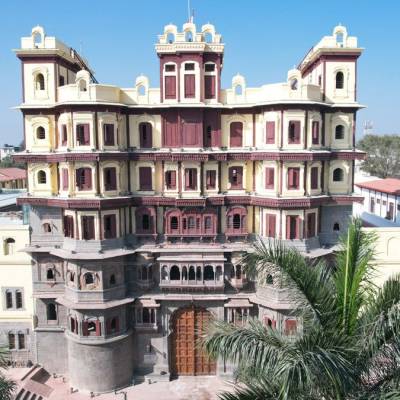- Home
- Infrastructure Urban
- SMART CITIES
- Hope at Hand

Hope at Hand
The year 2015 saw some positive moves aimed at easing flow of capital to infrastructure projects. The year 2016 should see further easing and resultant positive impacts on FDI in the construction, railways and defence sectors. It should also see the untangling of tax issues and the first few listings of real estate investment trusts and infrastructure investment trusts. This should facilitate unlocking and reinvestment of capital, providing a boost to the sector.
With 98 cities participating in the Smart City challenge, 20 smart city proposals are likely to be selected by end of 2015. These project proposals, focused on centre city redevelopment, infrastructure retrofitting and ICT-based PAN city solutions, are likely to be initiated in 2016. The year will also see a further 40 proposals being selected for implementation. These projects will have a significant positive impact on quality of life. They will see increased private-sector participation and have a huge demonstration effect on similar initiatives in other cities.
Urban mobility will get a boost with metro and suburban rail projects coming into execution mode. High-speed rail links between metros and neighbouring towns will see growth of towns within a radius of 100 km from metros. Modernisation of railway stations being opened up for private participation through the Swiss challenge route will see the emergence of ultra-modern railway stations on a par with the recently developed airports.
As the work on the Dedicated Freight Corridor progresses, special investment regions along DMICDC will start taking shape, with the initial few contracts related to infrastructure development being awarded in Dholera in Gujarat and Shendra-Bidkin in Maharashtra. Some of these new greenfield cities will be the largest such developments anywhere in the world and comparable to any other smart city in the world.
The Make in India programme and the easing of FDI rules have resulted in increasing interest in the logistics and warehousing sector. With GST coming into existence, floodgates will open in 2016 for mega warehousing parks, well integrated with road and rail-based transport infrastructure.
The crumbling transport infrastructure of Mumbai will get a lease of life with the initiation of the next phase of the Metro network, coastal road project, trans-harbour sea link and numerous other east-west connectivity projects. The year 2016 should also see initiation of work on the new airport in Mumbai.
A lot of groundwork has already happened in 2015. We enter 2016 with a lot of positive hope for infrastructure improvement in the country.
About the author:
Saurabh Mehrotra, National Director, Advisory Services, Knight Frank India, has over 15 years of experience in the field of infrastructure and real estate.
SAURABH MEHROTRA, is optimistic about infrastructure development in 2016. The year 2015 saw some positive moves aimed at easing flow of capital to infrastructure projects. The year 2016 should see further easing and resultant positive impacts on FDI in the construction, railways and defence sectors. It should also see the untangling of tax issues and the first few listings of real estate investment trusts and infrastructure investment trusts. This should facilitate unlocking and reinvestment of capital, providing a boost to the sector. With 98 cities participating in the Smart City challenge, 20 smart city proposals are likely to be selected by end of 2015. These project proposals, focused on centre city redevelopment, infrastructure retrofitting and ICT-based PAN city solutions, are likely to be initiated in 2016. The year will also see a further 40 proposals being selected for implementation. These projects will have a significant positive impact on quality of life. They will see increased private-sector participation and have a huge demonstration effect on similar initiatives in other cities. Urban mobility will get a boost with metro and suburban rail projects coming into execution mode. High-speed rail links between metros and neighbouring towns will see growth of towns within a radius of 100 km from metros. Modernisation of railway stations being opened up for private participation through the Swiss challenge route will see the emergence of ultra-modern railway stations on a par with the recently developed airports. As the work on the Dedicated Freight Corridor progresses, special investment regions along DMICDC will start taking shape, with the initial few contracts related to infrastructure development being awarded in Dholera in Gujarat and Shendra-Bidkin in Maharashtra. Some of these new greenfield cities will be the largest such developments anywhere in the world and comparable to any other smart city in the world. The Make in India programme and the easing of FDI rules have resulted in increasing interest in the logistics and warehousing sector. With GST coming into existence, floodgates will open in 2016 for mega warehousing parks, well integrated with road and rail-based transport infrastructure. The crumbling transport infrastructure of Mumbai will get a lease of life with the initiation of the next phase of the Metro network, coastal road project, trans-harbour sea link and numerous other east-west connectivity projects. The year 2016 should also see initiation of work on the new airport in Mumbai. A lot of groundwork has already happened in 2015. We enter 2016 with a lot of positive hope for infrastructure improvement in the country. About the author: Saurabh Mehrotra, National Director, Advisory Services, Knight Frank India, has over 15 years of experience in the field of infrastructure and real estate.


